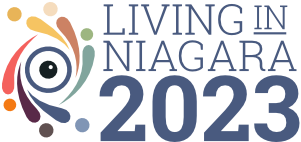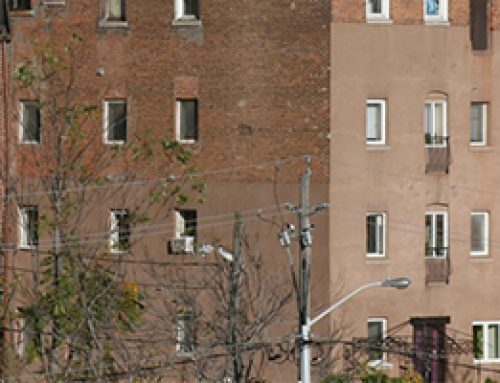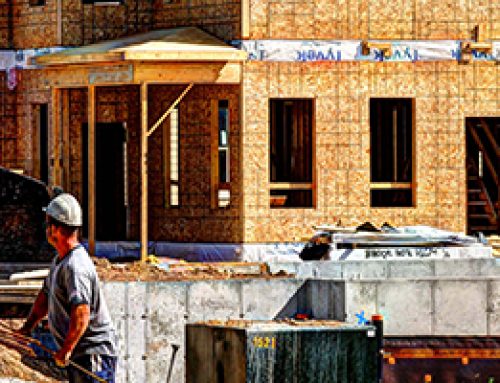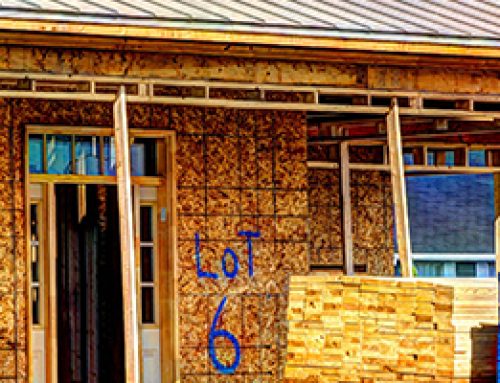Spending 30% of Income on Shelter and Housing
In prior versions of this report, this measure was listed as an indicator called ‘Spending over 30% of income on shelter and housing in Niagara’.
This measure speaks to the affordability of housing related to household earnings. It is generally discouraged by mortgage lenders that individuals spend 30% or more of their household income on housing as it will create financial difficulties. When a household is spending 30% or more of their income on rent, it is an indicator of affordability, poverty, and it can lead to homelessness.
Housing Market Outlook
The CMHC Housing Market Outlook – St. Catharines-Niagara CMA Spring 2014 predicted that (i)
housing starts will edge lower; (ii) existing home sales will rebound; and (iii) private apartment vacancy rate will tighten.
“Demand for rental coming from new arrivals to Canada and young working people will nudge vacancies down and rents up by the allowable Rent Increase Guideline of 0.8 per cent set for 2014 in Ontario. A slight fall in the 2014 private apartment vacancy rate as compared to 2013 will be accompanied by the growth in the average private two bedroom apartment rent.”
Source: CMHC
Retrieved From: http://www.cmhc-schl.gc.ca/odpub/esub/64315/64315_2014_B01.pdf
Housing Trends and Affordability
The RBC Economics Research report, Housing Trends and Affordability, August 2013 shows mortgage carrying cost (the proportion of median pre-tax household income required to service the cost of a mortgage on an existing housing unit at going market prices) for major centres in Canada, including the St. Catharines-Niagara CMA.
Source: RBC
Retrieved From: http://www.rbc.com/newsroom/pdf/HA-0827-2013.pdf
Average Market Rent
The average rental cost of a two bedroom unit is commonly regarded as a benchmark to describe the rental market. Two bedroom units are a typical unit for starting families and recent graduates (young adults).
Average Market Rent (AMR) for 2-bedroom in Niagara
The following graph showcases the rise in average market rent from 2007-2012

Source: Canada Mortgage and Housing Corporation, Rental Market Report 2012
Retrieved From: http://www.niagararegion.ca/social-services/technical-report/affordability-report.aspx
Figure 2, page 1 of the Canada Mortgage and Housing Corporation Fall 2013 Rental Market report – Ontario Highlights compares average 2-bedroom rental rates among Ontario centres, including the St. Catharines-Niagara CMA:

Source: CMHC
Retrieved From: http://www.niagaraknowledgeexchange.com/resources-publications/rental-market-report-ontario-highlights/
Average monthly rent (AMR) trends
Average monthly rent is vital to the rental market and speaks to the affordability of housing for those who do not wish to, or cannot own a house.
The following is an excerpt from the CMHC webpage regarding average rent in Niagara:
“Average rents – The average monthly rent (AMR) for a one bedroom apartment in April 2013 was $729 and a two bedroom apartment was $868. The average monthly rent for a three bedroom apartment was $1,010”
Source: CMHC
Retrieved From: http://www.cmhc-schl.gc.ca/en/co/buho/seca/nire/nire_002.cfm
For more in-depth AMR information, see figure 1.1.5_1 on page 11 of the document at the following link, to observe percentage change in rent from 2011 to 2013. This document also displays differences in AMR across unit types (townhouse vs detached house) and number of rooms.
Source: CMHC
Retrieved From: http://www.cmhc-schl.gc.ca/odpub/esub/64507/64507_2013_B02.pdf?lang=en
Purchase price of a home in Niagara
The purchase price of housing speaks to the affordability of housing in the region and the demand for buying a house. The absorbed unit price that the first chart below refers to is the amount for which a house is sold.
Relatively modest growth in the number of new houses being built and sold means the overall growth in the housing base in the region is also low. In turn, this puts pressure on availability of affordable housing for mid- to lower-income people. This is related to overall income levels in Niagara; the percentage of income that is spent on housing affects what’s affordable.
According to CMHC the average house price in Niagara in 2014 was $251,672.
Source: Niagara Regional Housing – Average Absorbed Unit Price of New Homes, 1990-2012
Retrieved From: www.nrh.ca

Source: Canada Mortgage and Housing Corporation, Custom data for St. Catharines – Niagara CMA
Average Residential Price on MLS (real estate multiple listing service), 2007-2012

Source: Canada Mortgage and Housing Corporation, Housing Market Outlook 2009, 2010, 2011 and 2012
Source: Both of the above graphs are sourced from the Niagara Region HHAP 2013 Technical Report
Retrieved From: http://www.niagararegion.ca/social-services/technical-report/affordability-report.aspx
Market Absorption Rate
This measure is new for the Living in Niagara-2014 report. It helps to provide a more comprehensive picture of housing availability and the rate at which housing is being utilized and bought in Niagara, as well as what needs in the housing market must be met.
Investopedia defines absorption rate as:
“the rate at which available homes are sold in a specific real estate market during a given time period. It is calculated by dividing the total number of available homes by the average number of sales per month. The figure shows how many months it will take to exhaust the supply of homes on the market. A high absorption rate may indicate that the supply of available homes will shrink rapidly, increasing the odds that a homeowner will sell a piece of property in a shorter period of time.”
Source: Investopedia
Retrieved From: http://www.investopedia.com/terms/a/absorption-rate.asp
| Absorption Rate Analysis to April 2013 | ||||
| City | Active Listings | Sales Last 6 Months | Average No. of Sale per Month | Months of Inventory |
| Welland | 232 | 238 | 40 | 6 |
| Port Colborne /Wainfleet |
198 | 117 | 19.5 | 10 |
| Thorold | 93 | 86 | 14 | 6.5 |
| St. Catharines | 434 | 596 | 99 | 4.4 |
| Fort Erie | 419 | 227 | 38 | 11 |
| Niagara Falls | 425 | 406 | 68 | 6.3 |
| Niagara-on-the-Lake | 229 | 97 | 16 | 14.2 |
| Lincoln | 97 | 79 | 13 | 7.4 |
| West Lincoln | 36 | 25 | 4 | 8.6 |
Source: Niagara Association of REALTORS® FUSION Software– though deemed reliable cannot be guaranteed.
Source: Niagara Association of Realtors
Retrieved From: http://www.century21.ca/eugene.pilato/Blog/Market_Absorption_Rates_in_Niagara_154264
New Housing Price Index (NHPI)
The NHPI is a monthly series provided by Statistics Canada which measures differences in contractors’ selling price of houses. This indicator speaks to the affordability and pricing of new housing that is being offered on the local housing market and is competing with existing housing.
The new housing price index for the years 2009-2013 for Canada and major municipalities, including the St. Catharines-Niagara CMA, can be found on the Statistics Canada website at the link below.
Data relevant for our purposes is as follows:
| 2007 | 2008 | 2009 | 2010 | 2011 | 2012 | 2013 | |||
| St. Catharines–Niagara (Ont.) | 100.0 | 104.3 | 103.7 | 104.5 | 104.0 | 106.1 | 109.4 |
The base year for the NHPI is 2007 (=100%).
Information regarding NHPI and Statistics Canada information acquisition strategy can be found at:
http://www23.statcan.gc.ca/imdb/p2SV.pl?Function=getSurvey&SDDS=2310
Source: Statistics Canada
Retrieved From: http://www.statcan.gc.ca/tables-tableaux/sum-som/l01/cst01/manuf12-eng.htm







